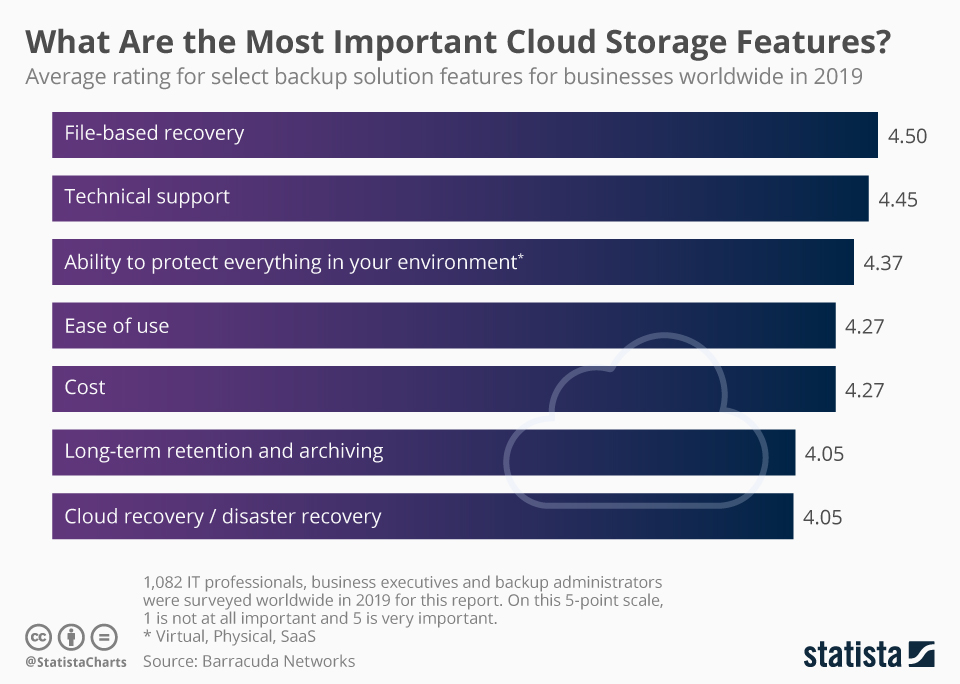
researchHQ’s Key Takeaways:
- Block storage is a storage scheme in which each volume acts as a separate drive, configured by the storage administrator.
- The benefits of block storage include performance enhancement of certain applications, greater flexibility and improved ease of file modification.
- The two main alternatives to block storage are object storage and file storage, both of which have their own unique pros and cons.
- Compared with object storage, block storage is significantly more expensive, not as powerful or customizable, and requires much more management and maintenance.
- While block storage is more flexible and can be adapted to provide higher performance than file storage, it does not have the convenience of a hierarchical file structure.
What is Block Storage?
Block storage is a storage scheme in which each volume acts as a separate hard drive, configured by the storage administrator. Data is stored in fixed-size blocks. A unique address serves as the metadata describing each block.
There is a unique software program, separated from storage media, which controls how blocks are allocated and organized on disk. The software also handles retrieval, using addresses to identify the required blocks and assemble them into files needed by the user. Block storage management software is usually controlled by the server operating system.
Access to block storage is granted via high performance protocols like Fiber Channel over Ethernet (FCoE) or Internet Small Computer Systems Interface (iSCSI). It is ideal for high-performance mission-critical applications and can provide high I/O performance and low latency. It is commonly used in a storage area network (SAN) environments, as a high performance alternative to file storage.
There are many cloud-based block storage options to choose from. Notable examples include Azure Managed Disk, Google Cloud Persistent Disk, and AWS Elastic Block Storage.
This is part of our series of articles on multicloud storage.
In this article, you will learn:
- Block Storage Pros and Cons
- Block Storage vs Object Storage
- What is the Difference Between Block Storage and Object Storage?
- File Storage vs Block Storage
- What is the Difference Between Block Storage and File Storage?
- Block Storage with NetApp Cloud Volumes ONTAP
Block Storage Pros and Cons
Block storage is a popular choice in modern data centers due to the following benefits:
- Performance—ideal for applications that require a high number of IOPS and low latency, such as database servers.
- Flexibility—as storage needs grow, organizations can add block storage volumes without sacrificing performance. Block storage can be moved between servers by changing the destination route.
- Ease of file modification—when a user changes a file in block storage, the system only needs to change the specific block affected by the changes. By contrast, in file or object storage, the file or the entire object must be overwritten.
- Operating system bootability—operating systems can be booted directly from block storage using a SAN (assuming the server BIOS supports this option).
Block storage also has its drawbacks. They include:
- Server binding—block storage is tightly connected to the server and cannot be accessed by other servers at the same time. Some software solutions can solve this problem, but puts more pressure on the file system and can degrade performance.
- Metadata limitations—block storage uses very limited metadata, much less than in file or object storage. This can affect application performance in metadata critical operations, such as search and retrieval, because the application cannot identify the storage location by meaningful metadata, and may have to scan a large number of blocks to find the required data.
- Cost—block storage is expensive. SANs require a heavy investment and require highly trained maintenance personnel. Larger organizations will find that block storage becomes a large part of their expenses on the cloud.
Block Storage vs Object Storage
Object storage models stores data using objects, which have three main elements:
- File mapping—objects cannot always be directly mapped to files. They may be parts of a file, or a collection of related data, which is not part of a file.
- Metadata—metadata can be defined by the author of the object library. This includes information on the content, the purpose of use, date of creation or modification, owners, permissions, and so on.
- A globally unique identifier—the identifier is a unique 128-bit value assigned to an object, which can help locate it in a distributed storage system. This allows object storage systems to search for data without knowing its physical location (data can be in different parts of a data center or distributed around the world).
What is the Difference Between Block Storage and Object Storage?
Object storage is very inexpensive compared to block storage. Because it is easy to scale, organizations can use it to store massive volumes of data inexpensively. Cloud storage services like Amazon S3, Azure Blob Storage and Google Cloud Storage are all based on object storage hardware
Object storage is powerful and customizable, as there is no limit to the type or amount of metadata. Metadata covers everything from the security classification of files to the applications which the data can be used for. Large-scale web applications like Facebook and Spotify use object storage for photos and rich media, and enterprise data centers use object storage to store the same types of data, ensuring high availability and reliability.
Unlike block storage, object storage doesn’t let you edit one part of a file. Objects are considered complete units and can only be viewed, updated, and rewritten as entire objects. Depending on object size, this can negatively affect performance.
Another important difference is that operating systems can access block storage directly as attached disks, but they cannot directly access object storage (or if they do, performance suffers significantly).
On the other hand, object storage requires virtually no management—unlike block storage which requires remapping volumes and other ongoing maintenance by administrators.
File Storage vs Block Storage
File storage is a way of storing data in a hierarchical system. Files hold the data in the same format in which it was created or received. File storage can be accessed using Server Message Block (SMB) in Windows or Network File System (NFS) protocol on Unix/Linux.
SMB and NFS make it possible to store files on a server in the same way that you would store data on a client computer. Administrators can mount all or part of the file system and share it with multiple client devices.
NAS devices are widely used to share file storage, and can also be used for backup, to provide file storage redundancy. These devices allow you to expand file storage beyond physically attached drives, to additional devices available over the network.
What is the Difference Between Block Storage and File Storage?
In block storage, operations are performed on specific blocks based on requests for files sent to the block storage server. The storage server needs to find the location of the block, retrieve it, and return the individual bytes comprising the file.
In file storage, requests for data are received through user-level interfaces, such as Windows Explorer or the MacOS Finder. These interfaces provide information about the file, such as filename, URL, directory locations, and more. This is more convenient for the user, and is easier on the storage system, because it does not need to find or piece together the file from individual chunks.
The main advantage of file storage, compared to block storage, is the convenience of a hierarchical file structure. However, block storage is more flexible than file storage, and can be adapted to provide higher performance, which is much more difficult to achieve in file storage systems.
In general, file storage is ideal for storing the contents of a desktop or directory, as a library for storing structured data or files with high data security requirements. Block storage is more suitable for mission-critical applications and as a back end storage system for virtualized systems.








